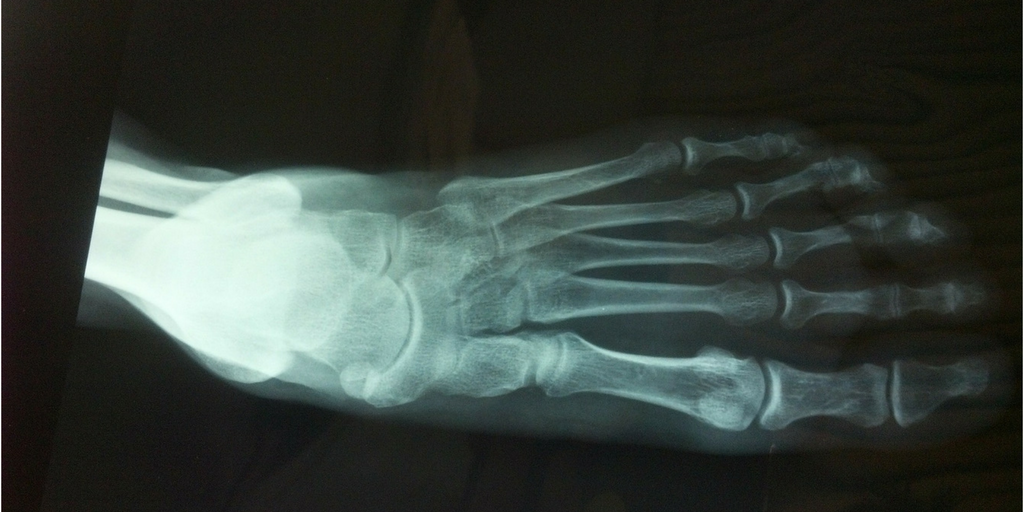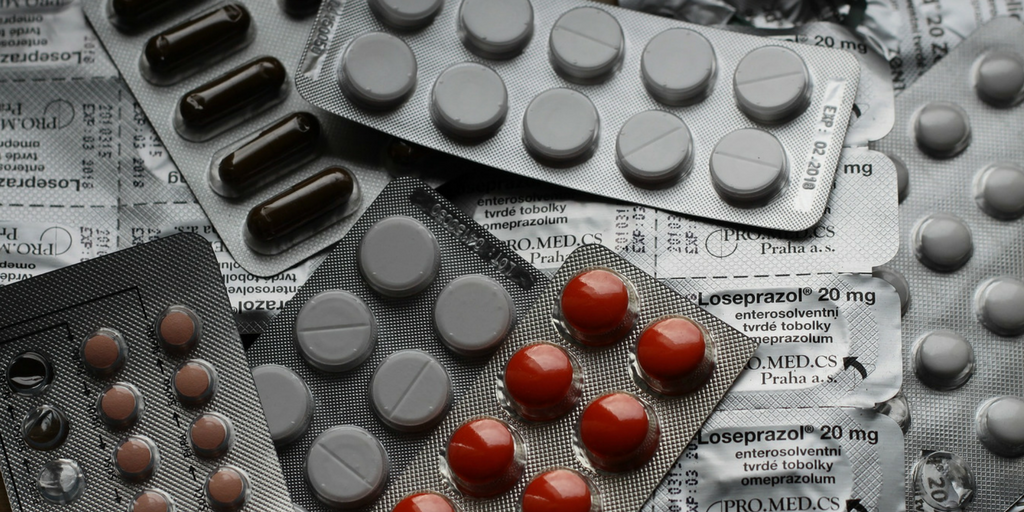How To Treat Scleroderma Naturally


Scleroderma may not be the most prevalent or deadly of all autoimmune diseases, but it is an unpredictable and disabling disease that affects thousands each year.
This condition can range from a mild case, in which only the skin is affected, to a more severe case where multiple organs become involved.
Conditions like scleroderma can bring on a whole new level of anxiety in people, often leading to a feeling of being out of control.
It’s natural for anybody to feel this way, and all of us here at SCD Lifestyle can relate. But thankfully there are things we can do to take back the reigns.
Whether you’re looking for ways to manage the symptoms of scleroderma, are seeking information on how to heal your gut, or simply want to feel your best, this article has got you covered. Read on…
What Is Scleroderma?
Scleroderma is a chronic disease that causes collagen (supportive tissue) to become hard and rigid. It’s most often associated with the skin but can also affect the digestive tract, blood vessels and internal organs.
There are two types of scleroderma: limited and diffuse.
Diffuse can involve any part of the body and is characterized by widespread skin involvement and rapid thickening. Tightened skin on the hands and joints can reduce mobility, cause pigment changes as well as hair loss, and the internal organs can also become affected.
In limited scleroderma, skin thickening is less widespread, often appears only on the hands and face, and develops more slowly. The “crest” syndrome is the most common type of limited scleroderma and is characterized by:
C – Calcium deposits under skin and in tissue
R – Raynaud’s (the most common initial complaint)
E – Esophageal dysmotility (contributes to heartburn)
S – Sclerodactyly (thick skin on the fingers)
T – Telangiectasias (enlarged blood vessels that often show up on the face)
So, how serious is scleroderma?
The severity of scleroderma will depend on which parts of the body are affected. Most concerning would be the involvement of the lungs, kidneys, heart and gastrointestinal system. Systemic sclerosis (diffuse) is often the most serious, as it can involve the disruption of these vital organs.
Scleroderma is not contagious, infectious, cancerous or malignant, but any chronic disease can become serious at any point.
The effects of scleroderma on the body, no matter the kind or classification, are difficult to predict from case to case and thus an early diagnosis is the best case scenario for successful treatment.
How Do I Know If I Have Scleroderma? (Diagnostic Tools)

Aside from identifying common symptoms, such as red spots on the skin, fatigue, mask like facial skin, weight and hair loss, stiff joints, and a persistent cough, the following measures are also used to help detect scleroderma:
- Blood tests – Elevated levels of antinuclear antibodies (immune factors) are found in a large percentage of patients with scleroderma.
- Computed Tomography (CT Scan) – It is important to verify whether it has spread to the lungs. An X-ray or computed tomography (CT scan) may be used to check for lung damage.
- Echocardiogram (an ultrasonogram of the heart) – Is recommended to detect lung involvement, if any.
- Endoscopy – A small tube with a camera on the end is used to view the muscles of the esophagus and intestines, as involvement can lead to heartburn, swallowing difficulty as well as nutrient malabsorption issues.
And while it is thought that fewer than 500,000 people are affected each year in the U.S., it can be a fatal disease. Scleroderma is more likely to affect women and the age of onset is typically between the age of 35 and 50 years old. African Americans and Native Americans are also more likely to be severely affected.
A proper examination is encouraged, as the data is used to help researchers move forward in their work of finding a cause.
Is There a Specific Cause of Scleroderma ?

The exact cause is not yet fully understood, but here’s what we do know….
Scleroderma is classified as one of the autoimmune rheumatic diseases. As with nearly all autoimmune conditions, the immune system begins to attack its own tissue.
Monocytes, are known as the “big eaters” of the immune system and are rapidly recruited to an injured or infected site. They produce immune signaling cells, which helps start the repair process. Those with scleroderma are found to produce an excessive amount of inflammatory cytokines, which can lead to the overproduction of collagen.
The excess collagen becomes hard and thick, similar to that of scar tissue. Some researchers describe this process as the body trying to lay down scar tissue where it isn’t needed… over and over again.
New findings have also pointed to the CD247 gene as having an integral part in the development of scleroderma, but more research is needed to confirm its involvement. As the science continues to unfold in this area, researchers remain focused on the factors that trigger the chain of events that lead to this autoimmune condition.
What Triggers Scleroderma?
Bacterial and viral infections, such as parvovirus B19, cytomegalovirus, Epstein-Barr and retrovirus, have all been linked to scleroderma.
Epstein-Barr virus, or EBV, is one of the world’s most common human viruses and has been heavily researched for it’s involvement in the disease process of scleroderma. One specific study recruited 53 people with diffuse cutaneous scleroderma, as well as 34 healthy people, all of which tested positive for antibodies against EBV.
Researchers isolated monocytes from participants’ blood and infected these cells with EBV. The analysis showed that EBV infection triggered activation of innate immune response genes in monocytes, particularly Toll-like receptor (TLR) 8.
“This is the first study that identifies infectious EBV in monocytes from patients with SSc, and mechanistically links EBV with activation of TLR8 and the IFN innate immune response in freshly isolated dcSSc monocytes. The results suggest that monocyte activation in SSc may be a consequence of EBV infection.” – Researchers of Arthritis Research and Therapy 2017
Other possible triggers include occupational exposure to certain chemicals, such as silica and silicone, as well as gut related issues. It may seem far off to think of a viral infection or the gut as having anything do with the development of scleroderma…
But research shows us just how connected they really are. Let’s take a closer look at what role the gut plays.
Scleroderma and the Gut
It is estimated that up to 90% of people suffering with scleroderma also experience gut-related issues. The following examples suggest a strong correlation between the disease process and a leaky gut:
- SIBO (Small Intestinal Bacterial Overgrowth) – This gut infection is present in up to 58% of those with scleroderma. Typical treatment includes antibiotic therapy, which can destroy all of the bacteria in our gut (good and bad) and aims to control the symptoms. A multi-faceted approach is necessary to get rid of SIBO long term and is an integral part of eliminating the gas, cramping and bloating that accompanies this gut infection.
- Constipation – An estimated 51% struggle with constipation issues, in which the standard medical advice to increase fiber intake can actually make other symptoms (like gas and bloating) worse. We’ve found these natural solutions to be incredibly helpful to those suffering with constipation and the pain that is often associated with it.
- H. Pylori – This study shows over 50% of those diagnosed with scleroderma also tested positive for Helicobacter pylori (H. pylori). This bacteria is known to survive the harsh, acidic environment of the stomach and plays a role in the development of the heartburn symptoms so many experience with scleroderma. H. Pylori is just one example of how an environmental trigger can cause a flare in genetically susceptible individuals.
- Celiac Disease – Several publications have reported the coexistence of Celiac disease and systemic Scleroderma. One of the major complications of Celiac disease is malabsorption of nutrients, which can further complicate holistic treatments (i.e nutrition therapy), and cause the patient to feel worse as they deal with vitamin and mineral deficiencies.
Bottom line is that healing the gut is only going to help in the fight against scleroderma.
Eliminating inflammatory foods, addressing any gut infections, and adding in a healing supplement routine are some key components to healing the gut. (More on how to heal a leaky gut below.)
Treating Scleroderma – Medical vs. An Integrative Approach

There are several different approaches to health, all of which generally fall into two categories – medical (mainstream treatment) or integrative (a more natural approach).
The main focus of a mainstream medical approach is to treat the symptoms. For those with scleroderma, this typically includes proton pump inhibitors or PPIs for GERD (i.e. heartburn), diuretics for high blood pressure, over the counter pain relievers for pain, and prescription drugs to suppress the immune system.
The upside to using medications is that they’re often effective for treating single symptoms, but there are a few questions to consider before taking this approach:
- Will this approach address the root cause?
- Will I be in control of my own health?
- What are the short- and long-term side effects of taking medications?
- What are the options when the medications are no longer effective?
The other choice is an integrative approach (also known as the natural or functional approach), and the main focus here is to decrease inflammation. Inflammation provides the foundation for disease to thrive and can result from many different factors. The goal of functional medicine is to identify all causes of inflammation and address them one by one.
Healing the gut with diet and supplements (i.e. probiotics), implementing stress management tools, and treating infections are some of the most powerful and effective ways to decrease inflammation.
To some, an integrative approach can lead to overwhelm and uncertainty about where and how to begin. And that is exactly why we’re here – to show you how simple and effective an integrative approach can actually be.
How Can I Treat Scleroderma?
Even just ten years ago, we used to think that the autoimmune process could not be reversed. However, the latest research is changing all of that.
Alessio Fasano, M.D. has been on the forefront of recent autoimmune disease research and published a paper titled “Leaky Gut and Autoimmune Diseases.”
His findings have revealed that prevention and reversal of autoimmune disease is possible. Fasano presents the idea that in order for an autoimmune condition to develop, 3 pre-existing conditions must all exist together.
- A genetic predisposition to autoimmunity (i.e. the CD247 gene in Scleroderma)
- An exposure to the environmental trigger (i.e. environmental toxins or a viral infection)
- Increased intestinal permeability (a.k.a. Leaky Gut Syndrome)
Hippocrates, the ancient Greek physician, stated “all disease begins in the gut,” and Fasano’s theory supports this wisdom. Emerging research is making a clear connection between the gut and chronic health conditions, even though modern medicine tends to neglect these facts. Some 2,000 years later, Hippocrates’ statement rings true and the power of the human microbiome can’t be denied.
How to Turn Off Autoimmune Disease

Whether you’re suffering from full-blown scleroderma, or suspect you may have an autoimmune condition, research shows us the gut is involved.
Based on the work of Dr. Fasano, one of the first places to start is your gut… and we’re here to help you.
Jordan and Steve hosted a free webinar called, “How to Turn Off Your Autoimmunity and Restore a Healthy Immune System.”
It’s completely free, and we walk you through how to address the health of your gut so that your immune system can stop attacking itself.
The topic of autoimmunity is complicated and the amount of information out there can be overwhelming. That’s why we’ve done the work for you and are grateful to support you on this journey.
– Lori Jo
Did You Like this Article?
Subscribe to our newsletter to receive email notifications, some ways to find relief, and next steps.
